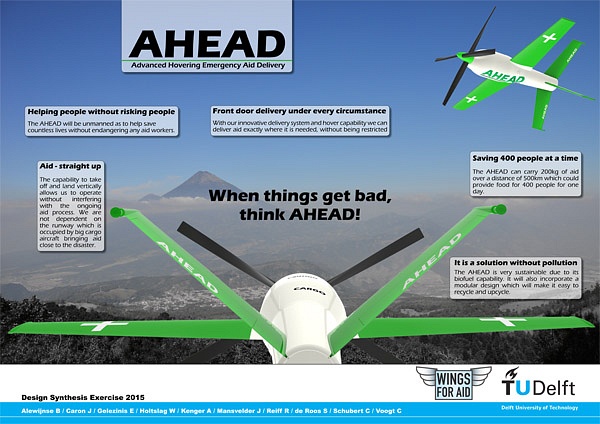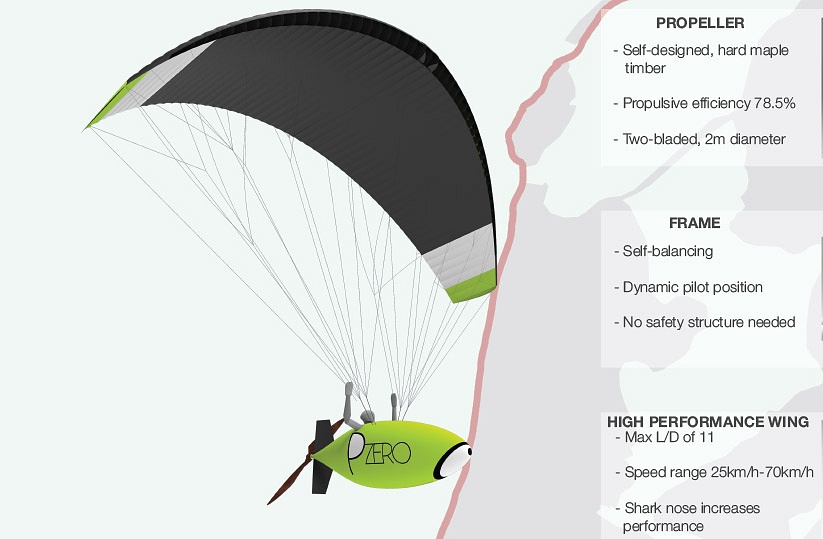A solar-powered glider, a power-generating kite and a silent motor glider. Last week saw the presentation of nine bachelor projects at Aeronautical Engineering.
The last ten weeks of the bachelor program at the Faculty of Aerospace Engineering consists of a group design assignment. The students face a challenge to apply the knowledge they’ve acquired over the last three years into the design of an airplane, a spacecraft or a space mission. Last Thursday nine teams of about ten students each presented their entries for the 2015 Design Synthesis Exercise to an international jury and an audience of families and friends.
Team Pzero took up the challenge to design an electrically powered paraglider that would weigh less than 22 kilograms, cost under 5,000 euros and yet be capable of crossing the Netherlands (300 kilometres) in one go. They came up with a rigid frame for the pilot, covered with an aerodynamic skin to reduce the drag. They placed the 5 kWatt electric engine with the 2 metre wooden propeller at the rear. The total mass added up to 42 kilograms, even though the team had chosen non-rechargeable batteries to limit the weight. Their calculations showed that their design would be able to bridge the 300 kilometres at an average speed of almost 40 km/hour. How to land without jeopardizing the prop was not clear from the documentation.
Whenever a disaster occurs, and people need emergency aid, it’s often difficult to reach the victims because roads and other infrastructure are out of use. Ten students come to the aid of the rescuers with a new dedicated form of air transport. The AHEAD (Advanced Hovering Emergency Aid Delivery) is an unmanned plane capable of carrying 400 kilograms of load over a distance of 500 kilometres. The flying container takes off standing on its tail, which allows it to operate independently from runways. The Ahead is designed to deliver the goods at one’s doorstep. When flying as a swarm, the planes can deliver more goods in one go.
Other designs included:
– the WHALE; a next-generation airlift military support aircraft
– a solar-powered glider able to cross the Atlantic
– a lightweight wing for generating kite power
– AERIS; an unmanned vehicle, powered by sun and laser, which could fly forever
– the installation of a radio telescope network at the dark side of the moon
– a wind-drive flight simulator called Aeolusim
– Stratos III; a student-built rocket able to reach 120 km altitude with 15 kilograms of payload


A summary of all projects is available here.



Comments are closed.